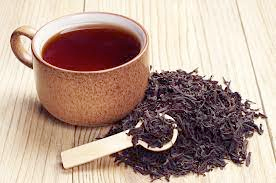Let Me Spill the Tea
We’ve all heard that tea is good for you. But what most people probably don’t know is the differences between classes of tea and all the wonderful benefits they have for you! In the U.S., black tea is the most popular by a long shot. But there are so many more kinds to try, not only for taste, but for health as well! I will share with you just a few of the various types of tea, their unique qualities, and their nutritional advantages.
1. Black Tea
Since black tea seems to be most popular, we’ll start here. Black tea is created by drying the leaves after full oxidation. With this level of processing and additional kneading of the leaves comes the capacity to produce fruity or even chocolatey flavor profiles. These sweet and bold flavors pair nicely with things like honey, milk, or spices. Best part? It contains manganese, a mineral that plays a role in metabolism, nervous system functioning, and antioxidant mechanisms.
2. White Tea
White tea is produced via air-drying, with the goal being to process the leaves as little as possible. The minimal oxidation yields a subtle floral essence and a smooth, rich composition. Because white tea leaves don’t undergo much of an alteration, they retain lots of polyphenols, which have shown to fight carcinogens, lower blood pressure, keep you energized, and reduce cholesterol.
3. Green Tea
Green teas taste fresh and have an herbal or sweet vegetable-like flavor profile. They have a lot of antioxidants, which protect the body from cell damage and chronic diseases. These teas also contain about 1/3 of the amount of caffeine in coffee and are a good source of phosphorus, which aids in bone/teeth formation, cell integrity, and metabolic regulation.
4. Oolong Tea
Oolong tea leaves are sensitive and dynamic. Following an oxidation process that is middle-of-the-road, the steps to produce oolong tea is complex and can vary easily based on who is making it. This opens the door to a host of possible aromas and flavors. Oolong contains slightly more caffeine than green tea, but still less than half of the amount in coffee. It also has even more manganese than black tea! It is also suggested that this type of tea can aid in weight loss and brain functioning.
-O.B.
https://medlineplus.gov/ency/article/002424.htm#:~:text=The%20main%20function%20of%20phosphorus,repair%20of%20cells%20and%20tissues.
https://www.pacificcollege.edu/news/blog/2014/07/23/health-benefits-white-tea
https://www.eatright.org/health/wellness/healthful-habits/the-health-benefits-of-tea
https://tools.myfooddata.com/nutrition-facts/171911/wt1/1
https://www.foodandwine.com/tea/different-types-of-tea
https://www.mountsinai.org/health-library/supplement/manganese
https://tools.myfooddata.com/nutrition-facts/174120/100g/1
https://tools.myfooddata.com/nutrition-facts/173227/wt1/1
Ha, Eun-Jeong. (2021). Antioxidants.
https://www.medicalnewstoday.com/articles/319646
https://www.mandalatea.com/white-teas/silver-needle-white-tea
https://www.goodhousekeeping.com/health/diet-nutrition/a38953019/green-tea-weight-loss/
https://www.healthline.com/nutrition/oolong-tea-benefits





Comments
Post a Comment